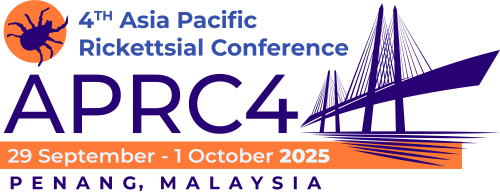Plenary 5
Ecology of Chigger Mites and Orientia Infection in Southern Chile
In recent years, scrub typhus has emerged as a significant public health concern in southern Chile, a region previously not recognized as endemic for the disease. The disease is caused by Candidatus Orientia chiloensis, and clinical cases have been identified across a vast area of over 2,000 km, from central to far southern Chile. Our research group has been conducting field surveys to assess the reservoirs and vectors of this disease, specifically exploring trombiculid mite species and the prevalence of Orientia in local rodent populations. In a 2018 study on Chiloé Island, chiggers were found on all seven captured rodent species, with a 55% prevalence rate. Orientia DNA was detected in 15% of chigger pools, with Proshoengastia (Herpetacarus) eloisae being the only positive species. A subsequent study in 2020, which included Chiloé Island and two mainland sites, found a chigger infestation rate of 89.4% among captured rodents. This research confirmed that Orientia DNA was present in four of the six mite species identified. Individual mite analysis revealed a prevalence of 31.2% in P. antarctica samples, 7.0% in Paratrombicula neuquenensis, 6.9% in P. eloisae, and 3.6% in Derrickiella (Argentinacarus) expansus. A key finding was the first-ever report of anthropophilic (human-seeking) behavior in the Proshoengastia genus and the description of P. antarctica as a novel vector for scrub typhus. Ongoing ecological research involves sampling 100 randomly selected sites in the Los Ríos and Los Lagos regions to understand how land-use changes and climatic factors affect the presence of trombiculid mites and Orientia infection in wild rodents. We have recorded four chigger genera so far: Proshoengastia, Paratrombicula, Derrickiella, and Quadraseta. Interestingly, 18% of Quadraseta pools and 5% of Derrickiella pools tested positive for Orientia. All positive Derrickiella genus samples were co-infected with Quadraseta, and nearly all positive samples originated from the Los Lagos region, where most scrub typhus cases have been recorded. Our initial studies led us to hypothesize that chiggers of the Proshoengastia genus are the reservoir of Ca. Orientia chiloensis, similar to the Asia-Pacific region where Orientia is maintained mainly by chigger species from the Leptotrombidium genus. However, our results highlight a different scenario where Orientia infection varies depending on the sampling area. Further studies are needed to expand the geographical knowledge in other areas of Chile to assess how the disease's ecology and transmission patterns may vary across different regions.
